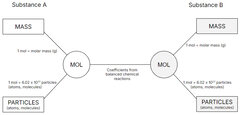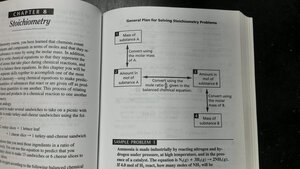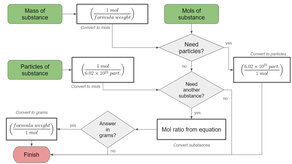Decision Making in Problem Solving
Published: 2025-01-16 3:45 PM
Category: Teaching | Tags: chemistry, science, stoichiometry
We're neck deep in unit conversions in chemistry and we've come to that bridge, yet again, where we have to wrestle with stoichiometry. Converting between units has gone better this year because I introduced with some models using common units like dozens, grosses, scores, and others. They counted beans, did their multiples and partials, and were able to get to the mol (I'll always leave the "e" off) without too much of a problem.
But then, we got to chemical compound conversions using balanced equations. Every year, this is where we come to an impasse for some students.
In the past, I've used the "mol island" metaphor and associated diagram to help make sense of the conversions that are happening to get from A to B:

Each year, moving from mols of A to mols of B is the hardest part, by far. The idea that you can convert between substances is hard to capture and, really, I should probably develop a new lab to help with the concept, but this year, I don't have time to at the moment.
This year, they're also struggling with procedure recognition - understanding where they are in a given process compared to where they need to go. I started tinkering with the idea of a flowchart, similar to how the old Holt Mini-guide to Problem Solving book models it:

This is nearly the same as my version, just less circley. I needed to do something different, and I ended up with this version:

I wasn't really planning on using it with students this year, but on a whim, I threw it on the board today and most of the class immediately asked for one to put in their notebooks.
I'm not sure what it is, but the yes/no questions along the way help them with the step-by-step processes needed to make it through a conversion, more than the island chart did. I think the connection between the questions and following the path to finish is providing an almost tactile interaction that is helping link ideas.
It's definitely a crutch, but I've always been more interested in teaching processes over fact retention. I think this is a better tool to help them approach novel situations and, with repeated use, they'll start to rely on the diagram less and less.
Frankly, this was born out of frustration and is more or less a happy accident. I'm hoping results actually pan out when I start to assess the skill formally next week.

Comments